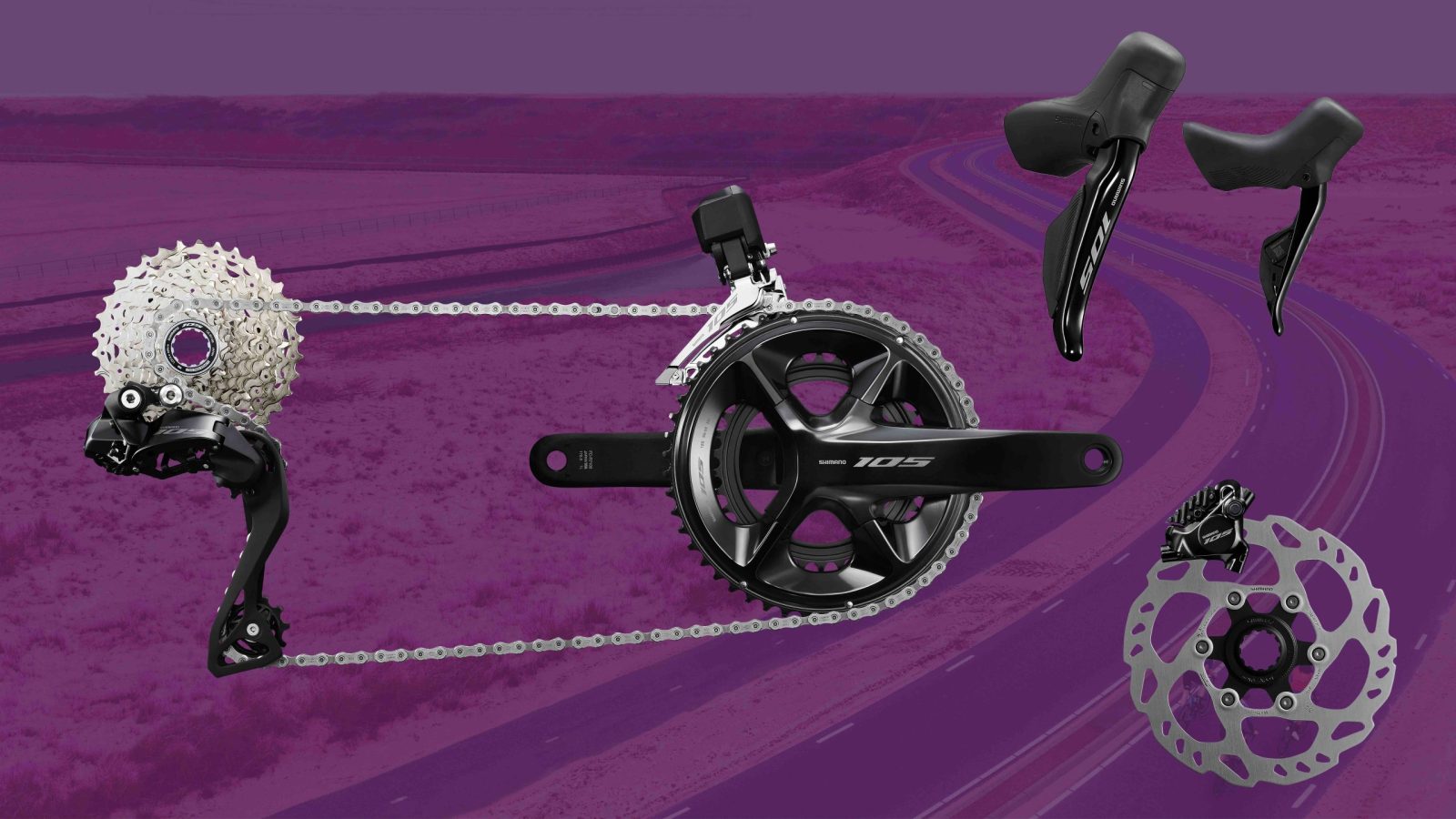Are you more of a sprinter, a climber or a plain old rouleur? You may think it comes down to your natural muscle make-up, but Cyclist reveals it’s not what you’ve got, it’s how you use it
The old rider’s favourite: ‘I’m more of a climber than a sprinter’ (or vice versa) is about to become redundant.
Popular opinion dictates cyclists fall into three distinct camps. Over there
are the sprinters, with thighs like tree trunks who can produce huge bursts of power over short distances. Then there are the mountain goats: skinny of limb but with a power-to-weight ratio that sees them climbing up mountains faster than most people can go down them. And in the middle are the rest of us, blessed with none of the specific attributes that would put us in either of the previous groups, and destined from birth to be average at all cycling disciplines.
Except that’s not quite the case. While there is an argument for genetics playing their part in sporting excellence, cycling, at least on a molecular level, is
the great leveller and despite our muscular make-up we all have a chance for glory.
Slow, slow, quick, quick, slow
There are three different types of muscle in the body: skeletal muscle (attached to the bone), smooth muscle (which relates to the organs) and cardiac muscle (the heart, basically).
‘When we talk about muscle fibre types we’re referring to skeletal muscle,’ says Xavier Disley, exercise physiologist and elite coach for RST Sport. ‘This muscle has a level of plasticity that means the composition of the fibres can, to a certain extent, change. For ease, exercise physiologists group the fibres into different types although in reality they’re all just points on a continuum.’
A muscle fibre looks like a long cylinder and it’s the three different characteristics of contraction that dictate where on the scale it will fall: the mechanism by which it produces energy, the type of nerve that innervates it and the structure of the proteins that make up the muscle.
‘Broadly speaking there are two main types of muscle fibre, Type 1 and Type 2,’ says Chris Easton, lecturer in clinical exercise physiology at the Institute for Clinical Exercise and Health Science, University of the West of Scotland. ‘However, at this molecular level there are also different sub categories: Type 2A which sits between Type 1 and Type 2, as well as Type 2X which sits between Type 2A and Type 2.’ Still with us?
As a rule of thumb, Type 1 muscle fibres – also known as slow twitch muscle fibres – contract slowly, contain lots of mitochondria (cells in the body responsible for energy creation) and myoglobin (the protein that carries oxygen within the muscle) and as such are very resistant to fatigue. These are your endurance muscle fibres and high proportions of them have been measured in elite marathon runners.
At the other end of the spectrum Type 2 fibres – or fast twitch muscle fibres – contract very quickly, about three to five times faster than slow twitch, and produce much higher forces. The energy required to do this comes from anaerobic processes rather than aerobically, as with Type 1, and therefore they don’t require large amounts of oxygen, which is reflected in their composition. ‘This is why the two types are very different in colour,’ says Easton. ‘Compare a turkey or chicken breast in a restaurant to that of a pigeon and you’ll see the birds that don’t use their breast muscles for any long duration contraction have very white meat, while the pigeon, which does, will be very red in colour due to the iron and blood required for sustained movement.’
What lies beneath
Before you start using your lack of Type 1 muscle fibres as an excuse for blowing up on a long club ride, take heed. Unlike so many other things, when it comes to muscle fibres all men – and women – are created equal. Mostly. ‘Any parts of the body involved in posture or stabilisation – the back, the neck, some leg muscles – will obviously be predominantly Type 1 fibres,’ says Disley, ‘because they have to be active all day. They may not need to create a lot of force but they do need to be very fatigue resistant otherwise your head would just loll to the side and you wouldn’t be able to stand up properly!’
As for the rest of the body, it’s pretty much 50-50. ‘If you looked at a sedentary person you’d find the percentage of Type 1 and Type 2 muscle fibres would be around 45% to 55%,’ says Easton. ‘Although you can get extremes and individuals who have very uneven percentages in the limbs.’
So how can you find out whether you’re one of the blessed or just straight down the middle normal? If you’re squeamish you may want to stop reading now.
‘We can do what we call in the trade a muscle biopsy,’ says Disley, ‘which is basically apple-coring the leg. We use a big cylinder, like a giant syringe, which is attached to a vacuum pump and takes a cross section out of the muscle.You stain the sample, stick it under a microscope and look at the different colours. If the muscle sample is really light then there’s a predominance of Type 1 fibres and if it’s really dark then it’s Type 2.’
You won’t find too many professional athletes putting themselves forward for the procedure though. ‘Normally when you do a muscle biopsy you take the sample from the vastus lateralis, which is the big cycling muscle,’ says Disley. ‘This is why pro riders don’t normally go near it. There was a study done by the French track cycling team in 2004 that looked at lean leg volume and related it to the maximum power produced during a flying 200. It’s hardly surprising the study found the riders with the giant legs could produce more power.’
Muscle memory
That doesn’t actually prove that large quad circumference equates to a higher proportion of fast-twitch fibres, but the important question is: can we train ourselves to have more of one type of muscle fibre? Again the jury is out.
‘The consensus is you can’t change from one to another,’ says Easton, ‘although you can make a muscle fibre perform more like a different type, but the three characteristics of contraction can’t be altered so you never get a complete change.’
According to Disley, it is possible to change muscle types, but it isn’t something you would want to try: ‘There have been some frankly horrific studies done with rats where they’ve been electrically stimulated for 12 hours a day which was sufficient to convert Type 2A muscle to Type 1. I wouldn’t recommend it though.’
Before you hook yourself up to a car battery for a 72-hour turbo session, take solace from the fact that as a physical activity, cycling refuses to deal in definitives.
‘Unlike something like power lifting, cycling isn’t specific enough an activity for the different fibres to benefit from too targeted a training regime,’ says Easton. ‘It’s a fallacy that you need a greater percentage of Type 2 fibres to be able to sprint, or more Type 1 to be able to climb hills effectively. It’s only when you’re cycling at very high intensity, above your lactate threshold or during a VO2 max test, that you’ll get an exclusive contribution of Type 2 fibres to the muscle contraction. Equally it’s only when you’re doing really slow sub-maximal efforts that you recruit Type 1 fibres exclusively – anything higher than that will use both Type 1 and Type 2 fibres. So a combination of different training methods is best for improved cycling performance.’
Back to track
‘In cycling, knowing your muscle fibre type is a pretty bad predictor of your performance, and not knowing won’t necessarily hold you back,’ says Disley. ‘One of the interesting things when you look at muscle fibre composition of professional athletes is what they did during their formative years. Chris Hoy is a good example – he did a lot of BMX riding at an early age, which set him up for his career on the track. You could virtually “grow” an Olympic athlete if you do the right things with them between eight to 16 years old.’
The fact that pro cyclists can successfully switch from track to road and back again proves that it’s what you do with what you’ve got that counts. ‘Wiggo and Cav are the obvious examples,’ says Disley, ‘but there are also people like Ed Clancy and Theo Bos – Olympic track sprinters moving to the road. You need to have a big capacity to be a track cycling sprinter, you don’t just get away with doing 10 seconds of effort and then rest; you need to have a huge aerobic engine and high VO2 max. This is why athletes can move between disciplines in cycling but not so much in other sports. You’ll never see a 200m sprinter run a marathon competitively, especially at a high class level, but in cycling it’s not such a big deal.’
So the next time a bad ride has you reaching for the excuses remember that, as far as what you’ve got attached to your bones, we’re all one in the saddle.
Want to improve your sprint or endurance? Here’s what the experts recommend
‘When it comes to cycling there’s a bit of disagreement within exercise physiology about the effectiveness of targeting specific muscle types,’ says Xavier Disley at RST Sport. ‘On the face of it, it would seem obvious that very high force, quick contractile velocity exercise such as plyometrics would target Type 2 fibres; short interval sprints of 20 to 30 seconds on the bike would target more Type 2A, and then anything longer than that is mostly Type 1.
‘As amateur cyclists rarely have the time to do the long, steady miles, interval training could substitute a couple of long rides per week and will give you similar adaptations for less time.’
In the gym a slightly different approach to training can reap dividends for specific muscle types.
‘For Type 1 fibres you want to increase rep ranges,’ says Anthony Purcell, cycling coach and director of Performance Pro. ‘Reduce the weight and make sure you’re doing five sets of at least 15 reps for every exercise. This will give you strength adaptations but without bulking up, which is the last thing a cyclist wants.’
For Type 2 fibres, using your gym’s static bike can help target them. ‘All you need are bursts of five-second efforts to hit those fibres,’ says Purcell. ‘Although it will have to be at 125% of your functional threshold power (FTP) and have minimal recovery. Try warming up for 10 minutes, then do an all-out five-second sprint, followed by 10 seconds recovery, then go again. Repeat that 20 times – if you can.’
Due to the nature of the short explosive contractions of Type 2 fibres, Olympic lifting, such as the clean and jerk, is one of the most effective forms of training. ‘Learning how to Olympic lift takes time though,’ says Purcell. ‘A shortcut would be to perform what’s known as a high pull – it gives you all the benefits of Olympic lifting but without the hassle of having to learn how to do it properly. Load a barbell with a light weight, and grab it with an overhand grip as if you were doing a deadlift. Explosively stand up, rising up onto your toes and pull the bar as high as you can by bending your elbows and raising your upper arms. Reverse the movement to return to the start.


